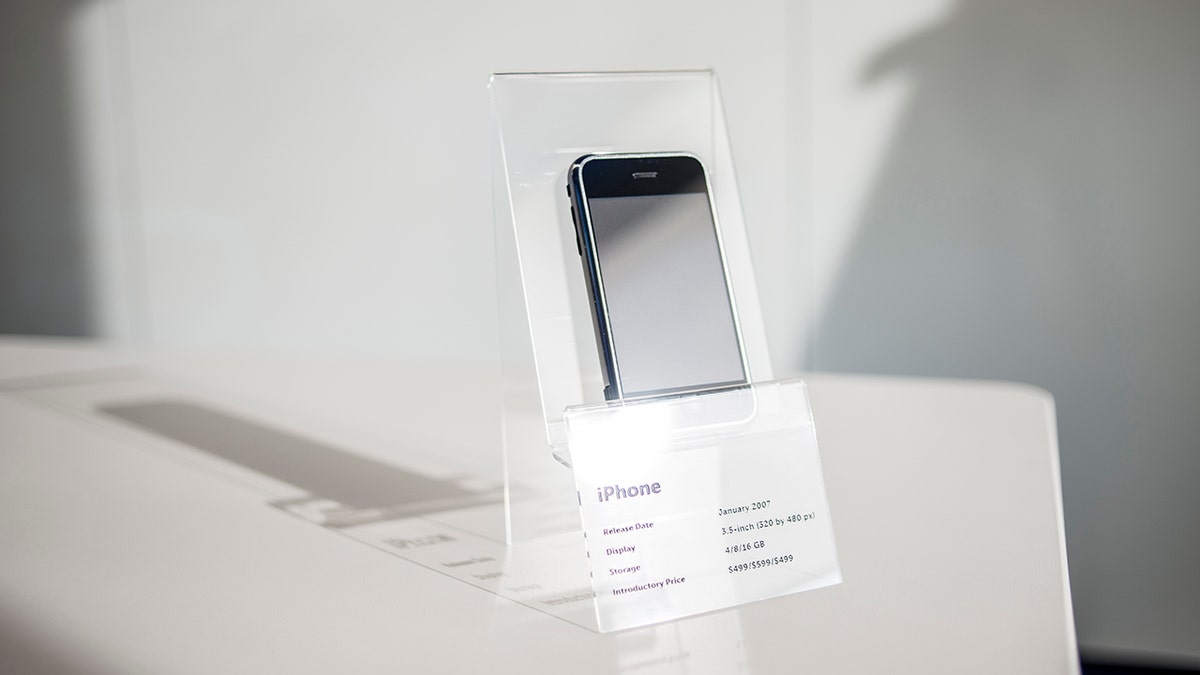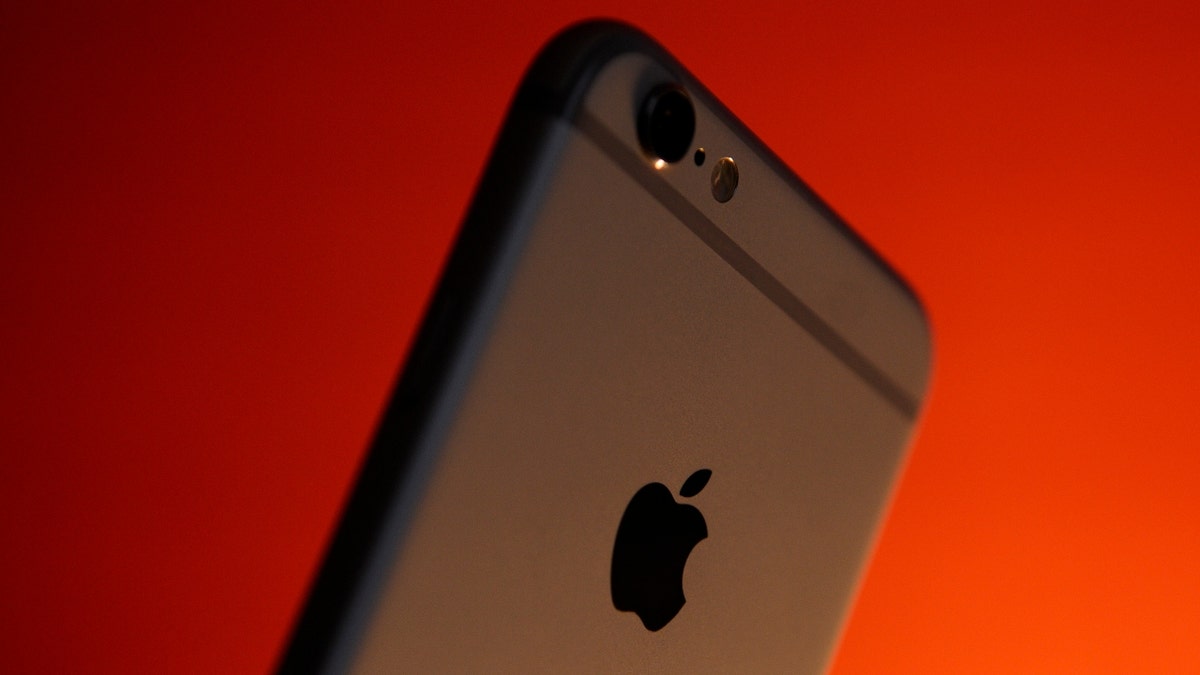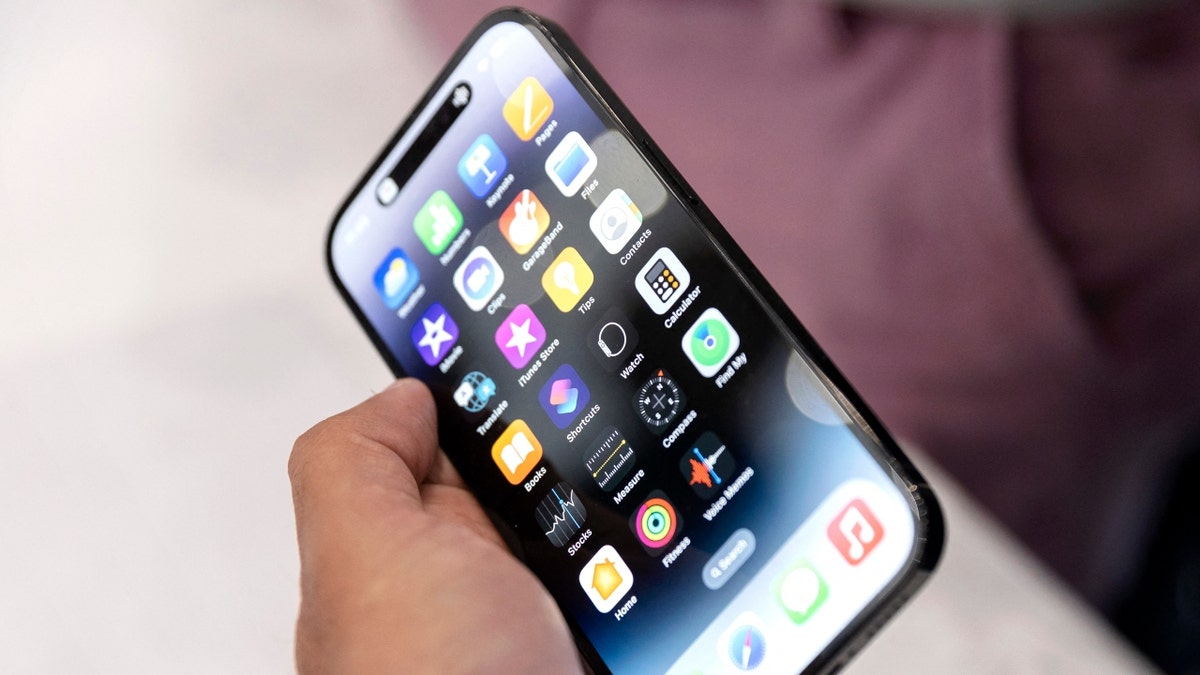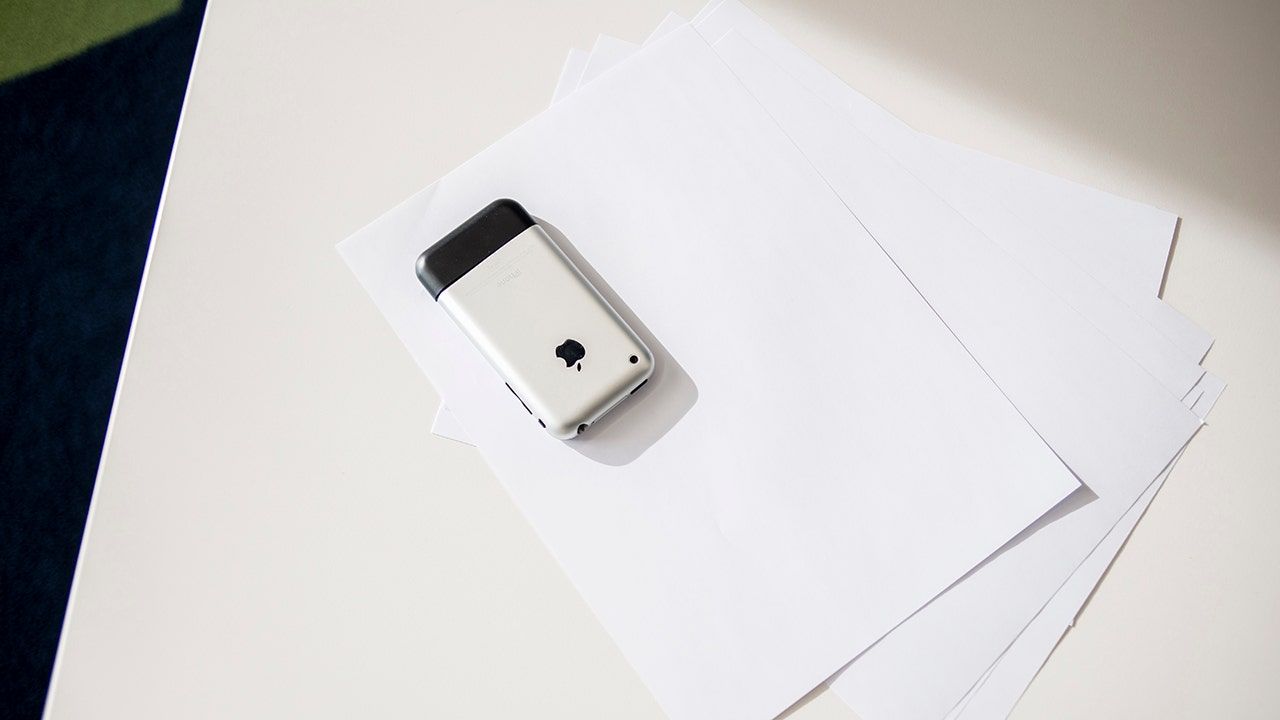Apple's revolutionary iPhone went on sale for the first time on this day, June 29, 2007, in Apple stores nationwide.
Apple's 164 U.S. retail stores remained open until midnight that night so eager customers could purchase up to two iPhones on a “first-come, first-served” basis, according to an Apple press release on that date.
First announced on January 9, 2007 by Apple CEO Steve Jobs, the iPhone was considered one of Apple's worst-kept secrets, yet it was arguably the most anticipated device of all time.
ON THIS DAY IN HISTORY, JUNE 28, 1778, 'PITCHING MOLLY' PROVIDES WATER TO HUSBAND'S REGIMENT, RISES TO FAME
“Before the unveiling at Macworld Expo, technology blogs published rumors purporting to contain details about the iPhone,” Wired said. “And days before the iPhone finally landed, [on] On June 29, hundreds of fanatical consumers camped outside Apple and AT&T stores to purchase the $600 device.
The iPhone is a “magical, revolutionary product” that is “literally five years ahead of any other mobile phone,” Jobs said during his keynote address.
The first iPhone model is shown above. (Oleksandr Rupeta/NurPhoto via Getty Images)
The first iPhone introduced an entirely new user interface based on a revolutionary multi-touch display, along with pioneering new software that allowed users to control an iPhone with just a tap, flick or pinch of their fingers, according to Apple.
“We are all born with the ultimate pointing device: our fingers, and the iPhone uses them to create the most revolutionary user interface since the mouse,” Jobs also said during his keynote speech.
The first iPhone combined three products into one small, portable device, serving as “a revolutionary mobile phone, a widescreen iPod and the Internet in your pocket, with the best applications ever in a mobile phone for email, web browsing and maps,” Apple said.
ON THIS DAY IN HISTORY, JUNE 20, 1975, THE GROUNDBREAKING AND TERRIFYING FILM 'JAWS' WAS RELEASED IN THEATERS
Additionally, the original iPhone had 15 apps: Calendar, Camera, Clock, Contacts, iPod, Maps (Google Maps), Messages, Notes, Phone, Photos, Safari, Stocks, Voice Memos, Weather and Settings, according to CNET.
The App Store launched on July 10, 2008, with 500 apps, according to CNET.

An iPhone is displayed at the Ukrainian MacPaw Apple Museum in kyiv, Ukraine, January 26, 2017. (Oleksandr Rupeta/NurPhoto via Getty Images)
Despite generating significant interest, the iPhone did not immediately make its way into the mainstream due to its high price, according to Wired.
“Just two months after the iPhone's initial launch, Apple cut the price of the phone to $400,” the publication notes.
“That helped a little, but it wasn't until 2008, when Apple introduced the iPhone 3G with a new $200 price tag and access to the faster 3G network, that the smartphone exploded in popularity. Apple sold more than 10 million iPhone 3G units worldwide in just five months,” he added.
ON THIS DAY IN HISTORY, JUNE 18, 1983, ASTRONAUT SALLY RIDE BECOMES THE FIRST WOMAN IN SPACE
On September 10, 2007, 74 days after the launch of the original iPhone, Apple sold its one millionth iPhone, according to CNET.
In 2008, just a year after its debut, Apple released a second version of the iPhone that was updated to use third-generation (3G) wireless technology.

The back of an iPhone 6 is photographed on October 25, 2017. (Jaap Arriens/NurPhoto via Getty Images)
“As with the original iPhone, demand was high and the new iPhone 3G sold one million units in the first three days after its introduction,” Britannica.com said.
In addition to the hardware changes, the new iPhone featured a 3-megapixel digital camera that could also record digital videos and had an internal digital compass, capable of working with various mapping programs.
The iPhone 4 was introduced in June 2010; it was thinner, had a longer battery life and offered a 5-megapixel camera and a front-facing camera for video chat and selfies, Britannica also noted.
The iPhone 5 hit the scene in September 2012, and the 5C and the more expensive 5S were launched in September 2013.
The 5S had a fingerprint locking system called Touch ID, that site also said.
ON THIS DAY IN HISTORY, JUNE 27, 1985, ICONIC ROUTE 66 REACHES THE 'END OF THE ROAD'
Apple introduced two iPhones in 2014: the iPhone 6 and iPhone 6 Plus, both offering improved cameras, ComputerWorld said.
Then in 2016, the iPhone 7 and 7 Plus debuted in two new colors: Black (a charcoal color with a matte finish) and the super-glossy Jet Black.

An Apple associate holds one of the new iPhone Pros during a product launch event at Apple Park in Cupertino, California, on September 7, 2022. (BRITTANY HOSEA-SMALL/AFP via Getty Images)
Apple introduced the iPhone 8 and 8 Plus in 2017, featuring a new glass and aluminum casing and an upgraded 12-megapixel camera that had a larger, faster sensor, a new color filter, deeper pixels and more capabilities, according to ComputerWorld.
No iPhone 9 model was released.
Also in 2017, Apple introduced the iPhone X, in which the display covered the entire front surface of the device.
The home button on the bottom of the iPhone was removed and users no longer used their fingerprint but instead used facial recognition to unlock their phones, according to Britannica.
ON THIS DAY IN HISTORY, APRIL 25, 1990, THE HUBBLE SPACE TELESCOPE WAS LAUNCHED INTO ORBIT BY THE SPACE SHUTTLE DISCOVERY
In the late 2010s and early 2020s, new iPhone models focused on incremental improvements in cameras, screen resolution, and processing power. “The iPhone 11 Pro and Pro Max (introduced in September 2019) were the first models to have three cameras on the back, with the third camera capable of taking wide-angle photos,” Britannica said.
For more lifestyle articles, visit www.foxnews.com/lifestyle
In October 2020, the iPhone 12 Pro got an even bigger sibling at 6.7 inches, the iPhone 12 Pro Max, according to ComputerWorld. Next up in 2021, the iPhone 13 and 13 mini offered users a new processor and better battery life.

A man holds an iPhone with applications on the front. (Silas Stein/Picture Alliance via Getty Images)
The following year, 2022, Apple launched the iPhone 14 Pro and Pro Max, and both models featured improved cameras and satellite SOS emergency support, according to CNET.
The highly anticipated iPhone 15 is expected in 2023; It will likely launch in September 2023, if Apple follows its traditional September release schedule, according to MacRumors.
CLICK HERE TO SUBSCRIBE TO OUR LIFESTYLE NEWSLETTER
Apple is one of the most influential brands in the world and is responsible for the rise of the smartphone along with the iPhone, according to The Business of Apps, which noted: “Valued at more than $2 trillion in 2021, it is also the most valuable technology “. company in the world.”
With more than 2.3 billion units sold since 2007, Apple has held the top spot in the global smartphone market.
Apple generated $394.3 billion in revenue in 2022, of which 52% came from iPhone sales, the site reported.
CLICK HERE TO GET THE FOX NEWS APP
Additionally, with more than 2.3 billion units sold since 2007, Apple ranked first in the global smartphone market, with a 27.71% market share in the first quarter of 2023, according to the Bank My Cell website.
As of June 2024, iPhone sales still generate about 55% of the company's total revenue, according to The Motley Fool.












